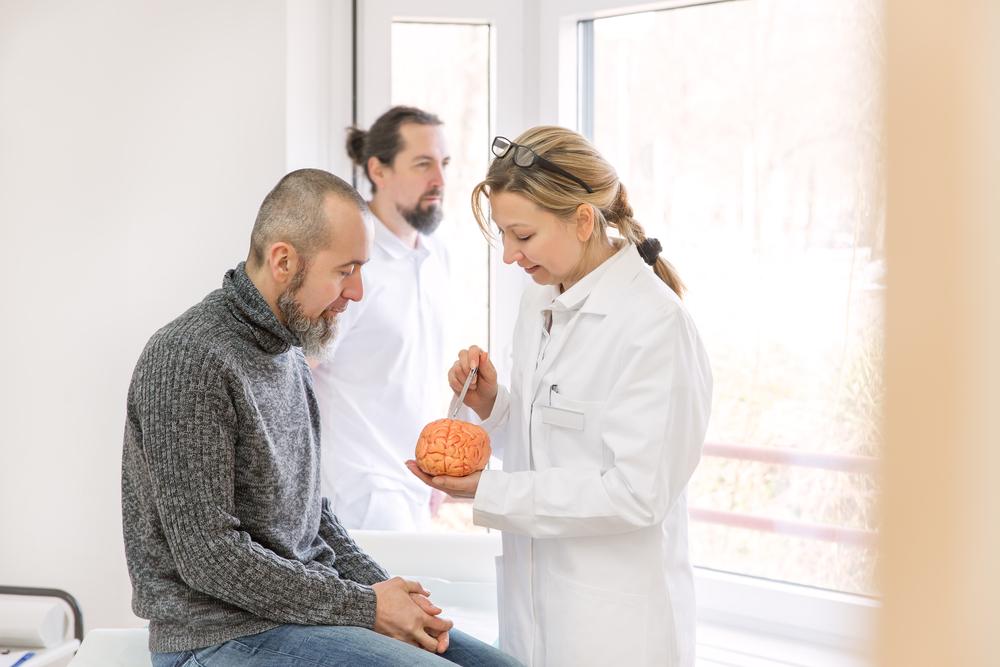Causes And Symptoms Of Bacterial Meningitis
Meningitis is the inflammation of the meninges. Meninges is the protective membrane that covers the brain and spinal cord. Most of the cases of meningitis across the country are caused due to bacterial, viral, and fungal infections. Out of these, viral meningitis improves within a few days to a week even without treatment.
Acute bacterial meningitis contributes to almost 80 percent of total cases of meningitis. Infection due to bacterial meningitis causes inflammation in the brain. This in turn interferes with the blood flow, which results in stroke and paralysis. Bacterial meningitis is one of those types of meningitis that can have life threatening symptoms and requires antibiotic treatment.

Causes of bacterial meningitis
Usually, children between the age one month and two years are most susceptible to bacterial meningitis. Outbreaks of bacterial meningitis can also occur in living situations where a person is in close contact with others, such as in college dormitories or in military barracks.
The bacteria that is responsible for bacterial meningitis are commonly found in the environment and can also be found dormant in our respiratory system and in our nose without causing any harm. A person can get infected with bacterial meningitis for no known reasons.
One can also get infected with bacterial meningitis due to a head injury which has made the person vulnerable to bacterial infection which weakens the immune system.
Following are some strains of bacteria that cause bacterial meningitis.
- Streptococcus pneumoniae
It is the most common form of bacteria that causes bacterial meningitis and infection in infants, young children, and adults across our country. The same bacteria causes pneumonia or sinus infection. - Haemophilus meningitis
Also referred to as meningococcus, it is one of the other bacteria that causes meningitis. It usually causes upper respiratory infection, which turns into the meningitis infection once it enters the bloodstream. This type of bacterial infection is highly contagious and mostly affects teenagers and young adults. - Listeria monocytogenes
These types of bacteria is mainly found in unpasteurized cheeses, hot dogs and luncheon meats. Older adults, newborns, pregnant women, and people with weakened immune system are most susceptible to meningitis caused by this type of bacteria. Listeria can cross the placental barrier and cause infection in late pregnancy stages. This can be fatal for both the mother and baby. - Haemophilus influenzae
Hib or haemophilus influenzae was considered to be one of the leading causes of bacterial meningitis in children. Meningitis caused due to this type of bacteria has been bought under control because of development Hib vaccinations.
Risk factors for bacterial meningitis
A person is at an increased risk if they have not completed the recommended vaccination schedule
- Most cases of bacterial meningitis occur in children younger than age 5 or in teenagers.
- Pregnancy increases the risk of listeriosis, which is a type of bacterial meningitis. It can lead to miscarriage, stillbirth, and even premature delivery.
Symptoms of bacterial meningitis
Spotting the signs of meningitis is not easy. Early symptoms of bacterial meningitis mimic influenza. Other symptoms light develop over a matter of few days.
Possible symptoms in babies older than age two include
- high fever
- stiff neck
- severe headache
- nausea and vomiting
- difficulty concentrating
- seizures
- problems with sleep (difficulty sleeping or waking up)
- sensitivity to light
- loss of appetite and thirst
- skin rashes (in case the baby is suffering from meningococcal meningitis)
Symptoms of meningitis in newborns
- high fever
- constant crying
- irritability or excessive sleeping
- sluggishness or inactivity
- a bulge in the soft spot on the baby’s head, i.e., fontanel
- stiffness in baby’s body or neck
Infants suffering from meningitis might be difficult to control as you might not be able to know the reason of their symptoms.
Symptoms in adults
Apart from some of the symptoms mentioned above, following are the symptoms of meningitis that you should look out for.
- skin rashes are the primary symptom of a bacterial meningitis
- a person suffering from bacterial meningitis might have abnormal skin color
- they might also experience stomach cramps in case they are suffering from meningococcal infection
- chills in the body and ice-cold hands and feet
- it also causes muscle aches and joint pains
- some people also experience rapid breathing when suffering from bacterial meningitis
Bacterial meningitis is serious and can be fatal if not met with prompt antibiotic treatment. Delayed treatment can increase the risk of permanent brain damage and death. If you or a person you know is suffering from similar symptoms seek immediate medical care as you can avoid serious complications if you go for early treatment of bacterial meningitis.

